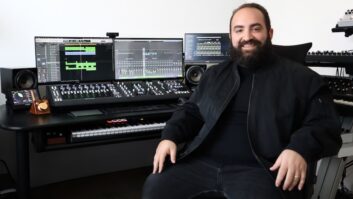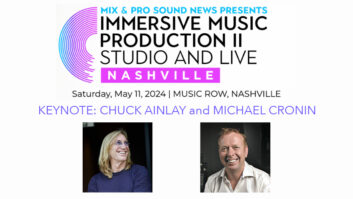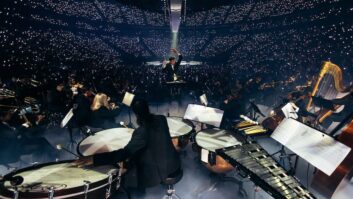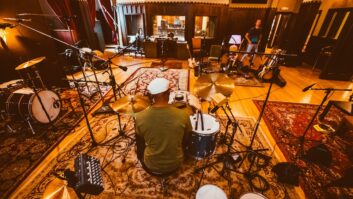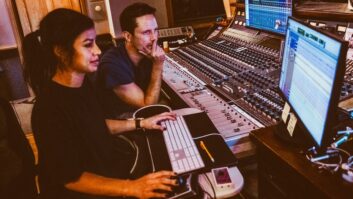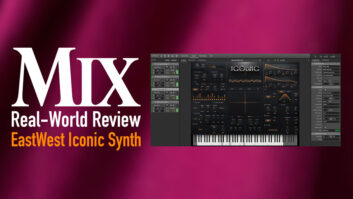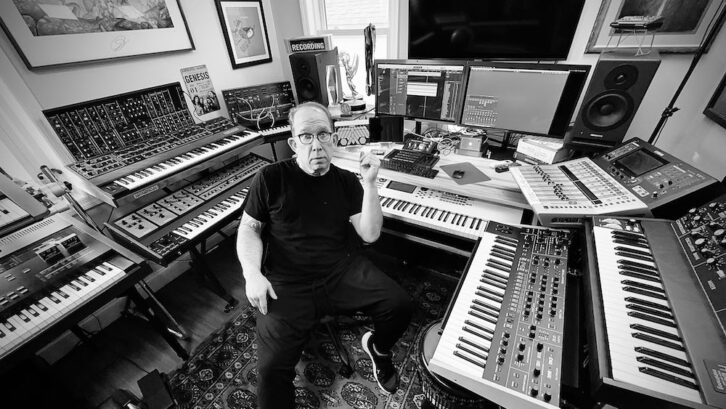
Michael Whalen describes the making of Our April Tigers, to be released April 21 by Michael Whalen Music, as “kinda like a dream team, kinda like a blind date.”
This wasn’t like any blind date that most of us ever went on, but he definitely brought in a dream team—one that included Karsh Kale, classical and electronic tabla player, and film and TV composer; bass virtuoso Michael Manring; Michael Brook, guitarist, producer and film composer; and trumpeter Jeff Oster.
It turned out to be a match made in heaven, likely because Whalen, a two-time Emmy Award-winning film and television composer, chose the musicians himself, even though he had never met any of them except Oster. To this day, he still hasn’t met them all in person, as the music was recorded by each individual remotely. Given their demanding schedules, Whalen knew he’d never get them in a room together.
After Whalen’s previous (and extraordinary) solo musical outing, Imaginary Trains, he decided that he would like the creative input of others. The collaboration that resulted in Our April Tigers is music for the senses.
It’s ear candy. Close-your-eyes-and-take-a-journey music. A cinematic and phonic voyage made up of both ethereal and gritty offerings. The canvas was pretty wide open and undefined at the get-go, and when Whalen proposed the idea to the other players, he could sense some trepidation. The concept sounded a bit like, “I’m not sure what this is going to be, but I’ll pass it around and we’ll see what happens.”
It sounded a little weird, Whalen knew, but he assured everyone that they would be co-writers and equal partners, and the only reason it appears as a “Michael Whalen” record is because Spotify only permits four featured people in the heading.
“It really should be a group record because it was written as a group and it was performed as a group,” Whalen explains. “As the producer, I had final say because I think having a singular vision, especially at the end with the mix, is important. I think what has killed projects in the past by other bands is having everyone in the studio with their hands on a fader. Too many cooks.”
Alan Parsons Master Class Records, Mixes Contest Winner in Atmos
Ultimately, all the co-conspirators took a leap of faith and Whalen began the process by giving each of them creative carte blanche, while setting his own personal boundaries: He restricted himself to one synthesizer and electric piano per song. While in the past he might have laid down up to 80 synth tracks on any given tune, he limited himself to two or three or four or five per song to give his partners room to be expressive. It turned out to be very satisfying.
His concept was to start seven songs with a couple of keyboard parts and a basic structure, and then pass it around with a “go ahead and do anything you want with them” instruction: “Cut it up, throw it out, play if it inspires you, do what you want.”
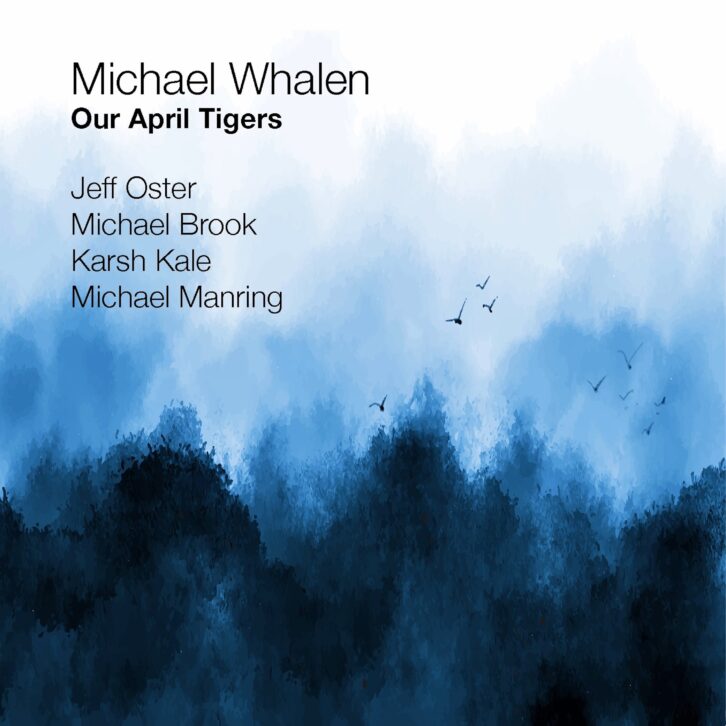
The songs first went from Whalen in New York to Brook in Los Angeles for guitars, then to Kale in India for his percussive work. Next, the music went to San Francisco, where Manring added bass, and then headed off to Oster, who lives in Mexico half of the year, so he could add trumpets. (Oster, who doesn’t have a home studio, went to New Hampshire, where Tom Eaton recorded his tracks.) After each finished their portion, the tracks were returned to Whalen, who created new stems including their finished parts. Then it was sent on to the next musician.
Whalen had his work cut out for him as most of the musicians worked on different platforms, so he sent .WAV files to everyone to line up and record to. Whalen is an Apple Logic Pro X user, as is Karsh; Manring uses Pro Tools; Brook uses Cubase; and Eaton recorded Oster on Pro Tools.
“I edited and comped some of the parts, but in most cases, I went into the mix with 100 percent of everyone’s contributions available, and then I made a lot of choices about what stayed and what went,” Whalen says. “In the end, I made choices about retaining space while keeping parts that forwarded the composition of each song. More than a project where great players play a lot of notes and show-off, this project was about five composers coming together and creating music together through listening and musical discipline.”
In fact, many of Brook’s parts were so subtle that Whalen was concerned that the bass and percussion would crush the guitar parts. From the beginning, he sought to ensure that everyone had equal representation, so he built several of the mixes around Brook’s contributions.
“I am so happy I did,” he says. “The textures and inventiveness of Brook’s parts really sets this project apart. He is such a creative and masterful composer and technologist.”
Explaining his approach to the overall mix, Whalen says, “I tried to keep the audio chain as simple and clean as possible. It was very important to me to have each of the musician’s musical ‘voices’ heard. All five of us were contributing equally. Therefore, the mix needed to feel organic and dynamic so it would feel like we were all playing in the same space together. Each of the musicians is someone who listens so deeply that the mix was fairly easy to find a balance.
“I love punchy percussion, but sometimes punchy percussion isn’t appropriate and you want percussion to do other things dynamically,” he continues. “On a record like this, it’s very, very easy for the percussion to take everything over, especially on the faster songs. One of the things I did was make sure that the percussive elements were backed-off. You definitely get the ‘point’ and edge of the parts, but it’s like the percussion is a step back from the other instruments. It makes the space feel bigger without having too much reverb or sonic ‘mud’ that some people have to contend with in their mixes. I like clarity, depth and textural interest in my tracks.”
He used an SSL2+ audio interface on the project and mixed on Dynaudio Core 7 studio monitors, which he loves because they are “very, very true.”
His favored outboard gear includes the SSL Studio Collection apps, “especially the compressors and EQ. Great sound,” he says. He loves the ValhallaDSP plug-ins and says their reverb and delays played a major part in the Our April Tigers mixes. He also used a lot of the Apple Logic plug-ins, Lexicon reverbs and even some outboard effects like his Moog MoogerFoogers and Mu-tron Bi-Phase reverb, which he says is a lot of fun.
The unorthodox recording process took about five months, with approximately two weeks to complete the mix, with revisions and needed breaks. Ultimately, he found the entire undertaking satisfying.
“I loved how well each of the songs came out compositionally,” Whalen states. “The players made some great choices. I knew how talented they all were, but they went beyond what I could have hoped for.”

